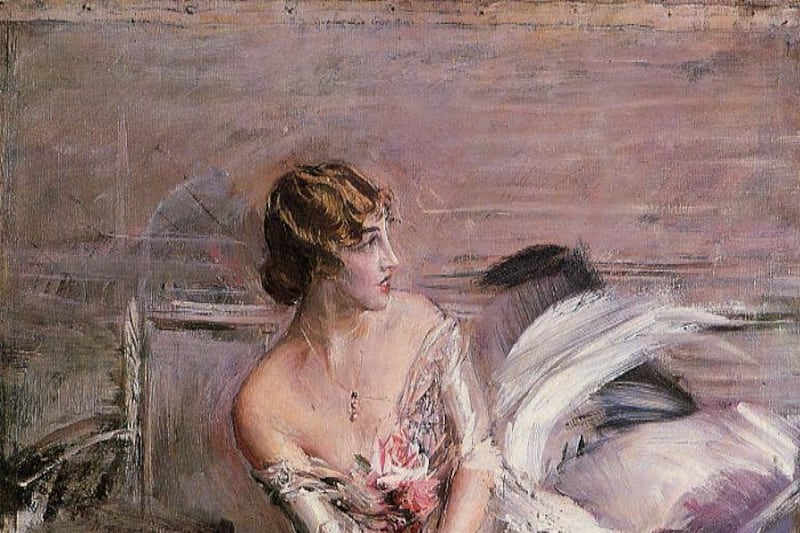The latest Paris Olympics may have been a triumph for Ireland, marking the nation’s belated coming of age as an international sporting power. But in some respects, the event also marked a dramatic decline in Irish ambition since the previous games in the French capital, a century ago.
The 1924 Olympics ended a bit earlier than this year’s, in July. And by mid-August, 100 years ago this week, they had been ousted from the news pages by a logistically larger event: Ireland’s own Olympiad, the Tailteann Games, held in Croke Park and other venues.
Inspired by a festival believed to have been inaugurated in Meath in 632 BC and thereafter repeated regularly until 1169 AD, when the Normans invaded, the revival was designed to emphasise Ireland’s ancient sporting lineage while promoting the new Free State.
It was first planned to happen in 1922. Then the Civil War intervened. But on the plus-side, the two-year delay allowed the event to piggy-back on Paris games, attracting international athletes to what was originally envisaged as something confined to athletes of Irish birth or lineage.
The woman who enchanted Proust – Frank McNally on the rise and fall of Gladys Marlborough
‘He never said that’: Frank McNally is tired of hearing a phantom WB Yeats quote
Fighting Farney – Frank McNally on the battle for his hometown’s ‘western front’
Monumental misstep: Frank McNally on the ‘tragedy’ of a great Irish sculptor, John Hughes
On the other hand, the Free State was a poor and still-troubled country in 1924. The £10,000 lavished on rebuilding Croke Park for the event proved controversial, while some in the Cumann na nGadheal government also feared sabotage by political opponents.
Among the venues considered for housing visitors was the Royal Hibernian (military) School in Phoenix Park. Alas, the general commander of the Free State Army, Eoin O’Duffy, refused permission on the grounds than one or more of the projected 400 guests could be an anti-Treaty republican who might “obtain entrance to the building for the purpose of setting it on fire”.
There was the prospect of industrial conflict too. Hence the opening night banquet, at which WB Yeats spoke, being held by candlelight. It sounds romantic but was among the results of a strike by municipal workers.
A measure of the hard times then is that the workers were campaigning not for extra money, but for the mitigation of a proposed pay-cut of six shillings a week. After a hastily agreed settlement, the cut was much reduced.
Another Yeats, Jack B, had famously won one of Ireland’s two medals in Paris, in the sports-themed art discipline. Oliver St John Gogarty won the other, for sporting poetry.
As for actual sport, as the Tailteann Games got under way, The Irish Times struck a defeatist note that would be justified for much of the next century:
“The advent of the United States in the international arena made an enormous difference, and nowadays nobody can hope to compete successfully with the Americans unless he is prepared to devote virtually his whole time to scientific training,” the paper lamented.
“Very few young Irishmen are in a position to make this sacrifice. The result is that, as far as running and jumping are concerned, we have nobody in this country who is in the same class with some of our visitors who will compete at Croke Park this week.”
The games’ staging, however, was a triumph – not least in the swimming events, which made the most of scarce resources.
Lacking any pool of requisite quality (and ignoring Yeats’s pictorial hint that they could use the host city’s main river, a wisdom perhaps underlined 100 year later in Paris), the organisers instead improvised with a pond in Dublin Zoo.
“The arrangements were splendid,” gushed The Irish Times, “everything working without a hitch, and reflecting the utmost credit on … the Irish Amateur Swimming Association.”
Outstanding performers there included the Australian Andrew “Boy” Charlton, who in the 200m and 800m events “fully lived up to his reputation as the greatest swimmer in the world”.
For another VIP visitor, meanwhile, the zoo made an uncannily prescient venue. Johnny Weissmuller was still just a swimming star then but would soon be more famous for playing Tarzan in a string of Hollywood movies. By added coincidence, his future Jane, actress Maureen O’Sullivan, was growing up elsewhere in Ireland at the time.
Not all visitors admired the ambition behind the Tailteann Games. The Welsh painter Augustus John later recalled the event as a festival of “fatuous self-glorification” by the new state.
His mood may have been affected by severe alcoholism, aggravated by accommodation in the Meath big house of Lord Dunsany, a teetotaller.
“I must get out of this,” he wrote in a letter, before channeling the Tailteann spirt to escape Meath with his own feat of athleticism. After the others retired to bed one night, he “climbed over the wall of Dunsany Park and walked the 14 miles to Dublin.”
The Tailteann games were held twice more under the Cumann na nGaedheal government, their four-year cycles again shadowing the Olympics, in 1928 (Amsterdam) and 1932 (Los Angeles).
But that last year coincided with the coming to power of Éamon de Valera and Fianna Fáil, for whom the event was tainted by being associated with the opposition. It was thereafter allowed to die. And when 60 years later, a Fine Gael TD (and lord mayor of Dublin) Gay Mitchell suggested an Irish bid to host the actual Olympics, the idea was greeted with something less than seriousness.

















